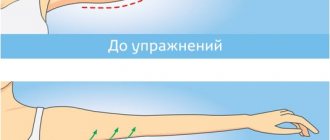Author: Timko Ilya - the ruler of the entire site and fitness trainer | more details >> Rod. 1984 Trained since 1999 Trained since 2007. Author and creator of the site tvoytrener.com. CCM in powerlifting. Champion of Russia and South Russia according to AWPC. Champion of the Krasnodar region according to IPF. 1st category in weightlifting. 2-time winner of the Krasnodar Territory championship in t/a. Author of more than 700 articles on fitness and amateur athletics. Author and co-author of 5 books.
Place in the author rating:
out of competition
(become an author)
Date:
2016-05-06
Views:
71,866
Rating:
5.0
| All articles by the author >> | Medals articles >> |
Articles are loading...
This question begins to torment a person when he has been working out for quite a long time without rest. He plows for a year, two, three, and then he begins to think. And these are the questions that arise in his tired brain:
1. Do you need to take a break sometimes?
2. If “yes,” then how do you know when and how often?
3. And how long should the break be?
4. And should I stop training completely or switch to light training?
5. Who am I and what am I doing here? )))
And if it is better to look for the answer to the last question in religion and philosophy, then I will now try to answer the remaining 4 questions. Let's go.
Physiology of muscle detraining[edit | edit code]
When you stop training, muscle size and strength begin to gradually decrease depending on the length of training. Structural changes are taking place. The muscle fibers most responsible for size and strength gains are type 2, or fast-twitch, fibers. Type 1, or slow-twitch, fibers are often called endurance fibers because they fatigue much more slowly than type 2. Due to their more efficient innervation, type 2 fibers thicken significantly more under load than type 1 fibers, which leads to increased muscle mass.
With age, fast-twitch fibers gradually atrophy, leading to relative weakness and fragility of the muscles of older people; scientists call this sarcopenia. In older people and those who lead a sedentary lifestyle, type 1 fibers predominate and are known to have little relationship with strength. Interestingly, the same processes occur with regularly training athletes when they stop training for a long time.
Detraining among weightlifters[edit | edit code]
Muscles disappear much more slowly than they are built, so even after a break of a month or more, you will still be stronger than when you started. For example, in one study, weightlifters showed a relatively small drop in squat strength, just 10%, after stopping training completely for a month.[1]
Another interesting observation is that you will retain more muscle if you perform both concentric and eccentric muscle contractions.[2] You contract the muscle concentrically when you lift the weight, eccentrically when you lower it (negatives).
In a study of the effects of detraining on high-level powerlifters, researchers found that after a seven-month break from training, the number of type 1 fibers increased by 1.4 times compared to baseline (the point at which training was stopped).[3] Other observations of competitive bodybuilders showed a 6% drop in type 2 fibers after a rest period of 13.5 months.
In terms of muscle size, a study of 12 weightlifters who did not train for just two weeks showed a 6.4% decrease in type 2 fiber cross-sectional area.[4] Interestingly, the athletes' anabolic hormone levels increased during the rest period. Growth hormone increased by 58.3%, and testosterone by 19.2%. Levels of the catabolic hormone cortisol decreased by 21.5%. Typically, this hormonal profile promotes strength and muscle mass, but lack of training leads to fiber atrophy, despite high levels of anabolic hormones. The obvious conclusion is that in order to noticeably increase the size and strength of your muscles, you still need to train.
The same study found that 12 athletes' maximum bench press and squat performance remained unchanged during a two-week rest period, but there was a drop in strength in eccentric leg extensions. This result allowed the authors to assume that the eccentric component of strength decreases most rapidly during the break.
Another study found an 11.6% decrease in athletes' performance in squats and a 12% decrease in leg extensions after an eight-week break from training.[5] The researchers also noted a decrease in nerve transmission, which they believe was due to a drop in muscle strength and size. The bottom line is that muscle activation by exercise is necessary to maintain and improve neuromuscular mechanisms that relate to muscle strength and size. That is, the body, feeling a lack of muscle stimulation in the absence of loads, inhibits neuroactivating processes, which causes muscle atrophy.
This latter effect explains how one form of physical therapy, electrical muscle stimulation, works to prevent fiber atrophy when the limbs are immobile. The electrical current produced by the generator mimics the natural process produced by exercise, creating the neuroactivity needed to maintain muscle size and prevent unnecessary muscle atrophy.
As noted above, one way to combat detraining is to include an eccentric component in each repetition of exercises with heavy weights. This promotes more powerful strength gains and increased neurological activity in the muscles.
Detraining and steroids
Users of anabolic steroids and other similar drugs often notice how quickly their muscles shrink after the end of the cycle. This allows others to assume that most of these muscles are gained through steroids. However, a careful examination of the issue reveals a completely different picture. Most of these athletes train harder and harder while taking the drugs, and when the cycle ends, the training often stops. And if it doesn’t stop, it goes away with much less intensity.
Although some of the muscle gained with steroids is lost after the drug is stopped, there is no physiological reason for losing all the muscle mass gained. The true cause of such losses is most often a change in training intensity and diet. If steroid users continue to train as hard as before at the end of their cycle, they will lose very little muscle. But some of them still leave.
Lack of training among newbies
There is a 2013 study [6] where beginners performed strength work for 6 months, they were divided into 2 groups, one trained continuously without breaks for 24 weeks, the second with 2 breaks from training for a period of 3 weeks during these 6 months. According to the results of the study, it was revealed that breaks in training for beginners do not reduce either strength indicators or muscle size. More precisely, during the 3-week break itself, some of the strength indicators and gained muscle mass decreased, but when returning to training, the increase in strength and muscle growth occurred 2 times faster than in the group exercising continuously.
Results of similar studies:
- after 8 weeks of training and 8 weeks of a complete break after, half of the muscle mass gained is present[7];
- after 19 weeks of strength training, with a 4-week break, most of the gained MM was preserved[8];
- all resulting hypertrophy was practically reduced to zero after 3 months without training (which was preceded by 3 months of strength training) [9].
Is it possible to preserve muscle during a break?
Recent research has shown that most muscle strength and size can be maintained with a surprisingly small amount of training. In one such experiment, subjects began exercising two to three times a week.[10] The frequency of training was gradually reduced to two, one and no training per week. Significant muscle loss was recorded only in the latter case. Even one workout weekly was enough to maintain the gained mass and strength.
The effect of breaks on aerobic performance[edit | edit code]
Meanwhile, as muscle strength and size gradually decrease during a break in training, aerobic performance drops much faster. You begin to lose shape within days of stopping aerobic exercise. It's all about oxygen consumption. The body compensates for the increase in its consumption by increasing the efficiency of certain physiological mechanisms, including increasing capillarization within the muscles for more efficient delivery of oxygen to working muscles, increasing blood volume and improving the functioning of the heart, that is, an increase in the volume of blood pumped. To enhance the use of fats as fuel, oxidative enzymes in working muscles are activated.
The overall effect of all these changes is an increase in average maximum oxygen consumption. When aerobic training is abandoned, maximum oxygen consumption decreases less in people who have recently started training, as opposed to more experienced athletes. As noted, the opposite happens in weight training - more experienced athletes are able to hold muscles much longer than less experienced ones. When you stop aerobic exercise, there is a rapid loss of oxidative enzymes, causing the body to rely more on carbohydrates than fat for fuel. Increased cellular glucose uptake during exercise decreases just 10 days after aerobic exercise stops.
The body's decreased ability to eliminate metabolic by-products caused by training (such as lactate) can lead to increased levels of muscle acidosis, causing fatigue to set in more quickly. In addition, glycogen synthesis levels decrease one week after stopping aerobic exercise. Unlike the changes caused by resistance training, aerobic detraining has no effect on growth hormone and cortisol levels.
Is it possible to maintain aerobic performance during a break?
One possible solution to the issue of losing your aerobic “gains” could be cross-training, that is, replacing one form of aerobic exercise with another. Moreover, there is no need for a large load. Research shows that you can maintain your aerobic capacity with minimal training. However, this does not apply to world-class athletes, who will experience a significant decline in performance when switching to shorter or less intense training sessions.
How long should the break be?
Depends on how tired you are and how often you rest. I believe that the break should be at least 1 week and no more than 1.5 - 2 months.
If there is only fatigue, but no special injuries, then resting for 2 to 3 weeks will be enough. If injuries are added to fatigue, then a month or even more.
However, you need to understand that the longer you rest, the more time it will take you to get back on track. If the rest is a week, then this will not affect your results in any way. If 2 - 3 weeks, then 1 - 2 weeks you will then enter the usual training regime.
The role of muscle memory during a break[edit | edit code]
Another muscle-related effect is muscle memory. We are talking about gaining muscle mass, which was once already gained and then lost - for example, due to a break in training. As noted above, most muscle loss when you stop training is due to a lack of neuromuscular stimulation. However, the neural pathways created during training are preserved. When training resumes, these “pathways” are activated and the previous muscle mass is restored faster. This is the explanation for the phenomenon of muscle memory. The term is very apt, since the whole process is associated with the activity of the nervous system.
Read more:
Muscle memory
What about cardio?
Things are not so rosy here. Once you take a break, a noticeable rollback will begin within a few days.
After a week, the level of glycogen synthesis decreases, which could potentially affect the degree of endurance.
By the second week, VO2 Max (which characterizes the body’s ability to absorb, transport and use oxygen during exercise) will decrease by 7%, by the fourth by 20%, and by the 8th it will fly to the level before the start of training.
The essence of the mechanism is simple. While you train, your body gets used to the load. The heart and lungs “learn” to deliver more oxygen to the cells. Without exercise, the heart loses its ability to pump more blood . As a result, when you return to the treadmill, you will not be able to reach the same speed or cover the same distances until you again “teach” the body’s systems to work as before.
Cardio break for beginners
If in strength training beginners have an advantage over experienced athletes after a break in training, then with cardio things are exactly the opposite. For beginners, even a short break causes a greater decline in the body's aerobic capacity than for professional runners.
How to lose less during a break?
Use alternative cardio options such as rowing, underwater running or cycling. In case of injury, such a decision will save you from a serious setback. However, keep in mind that the chosen alternative must still be compatible with the injury.
You can also do strength training - a number of studies [6] have confirmed that it can increase VO2 Max and endurance.
Sources[edit | edit code]
- Hakkinen, K., et al. (1985). Changes in electrical and mechanical behavior of leg extensor muscles during heavy resistance training. Scand J Sports Sci. 7:55-64.
- Dudley, G., et al. (1991). Importance of eccentric actions in performance adaptations to resistance training. Aviation, Space, and Environ Med. 62:543-50.
- Staron, R. S., et al. (1981). The effects of detraining on an elite powerlifter: a case study. J Neurol Sci. 51:247-257.
- Hortobagyi, T., et al. (1993). The effects of detraining on power athletes. Med Sci Sports Exerc. 25:929-35.
- Hakkinen, K., et al. (1981). Effect of combined concentric and eccentric strength training and detraining on force-time, muscle fiber and metabolic characteristics of leg extensor muscles. Scand J Sports Sci. 3:50-58.
- Ogasawara R1, Yasuda T, Ishii N, Abe T. Comparison of muscle hypertrophy following 6-month of continuous and periodic strength training. Eur J Appl Physiol. 2013 Apr;113(4):975-85. doi: 10.1007/s00421-012-2511-9. Epub 2012 Oct 6. [PubMed]
- Bertrand Léger, Romain Cartoni, Manu Praz, Séverine Lamon, Olivier Dériaz, Antoinette Crettenand, Charles Gobelet, Paul Rohmer, Michel Konzelmann, François Luthi and Aaron P. Russell. Akt signaling through GSK-3β, mTOR and Foxo1 is involved in human skeletal muscle hypertrophy and atrophy. The Journal of Physiology Volume 576, Issue 3, pages 923–933, November 2006.
- Hather BM, Tesch PA, Buchanan P, Dudley GA. Influence of eccentric actions on skeletal muscle adaptations to resistance training. Acta Physiol Scand. 1991 Oct;143(2):177-85.
- Andersen LL, Andersen JL, Magnusson SP, Suetta C, Madsen JL, Christensen LR, Aagaard P. Changes in the human muscle force-velocity relationship in response to resistance training and subsequent detraining. J Appl Physiol (1985). 2005 Jul;99(1):87-94. Epub 2005 Feb 24.
- Graves, J., et al. (1988). Effect of reduced frequency on muscular strength. Int J Sports Med. 9:316-319.
EVERYTHING IS INDIVIDUAL
The point that I would like to draw the special attention of amateurs is that everything is individual: rest time, number of approaches to the exercise machine, etc. Playing sports should bring pleasure, otherwise you will finish training after several trips to the gym.
It happens that guys and girls come to us who have watched video lessons, read specialized literature and try to do everything, so to speak, according to the textbook. This is not always correct, because the parameters in such lessons are usually averaged and do not take into account the characteristics of a particular person.
For example, I see a guy pressing the barbell, resting for a minute and picking it up again, because the expert said so in the video lesson. But I understand that the guy has not yet “moved away” from the previous approach, but is already starting a new one. Or another example: a girl came to the gym for the first time and pedaled on an exercise bike for an hour and a half straight, underestimating this lightweight, at first glance, apparatus. It is not right. In order not to ruin your health in attempts to gain it, you must first listen to yourself.
Is it possible to listen to music while playing sports? More details











